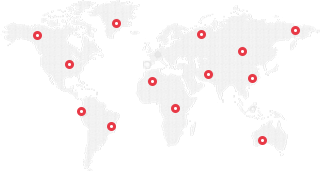
Group therapy is a form of psychotherapy where individuals come together to discuss their issues, concerns, and emotions under the guidance of a trained therapist. The group setting allows for sharing experiences, receiving support, and learning coping strategies from one another. It offers a unique opportunity for individuals to explore their feelings and behaviors within a safe and confidential environment.
What is Group Therapy?
Group therapy, as the name suggests, involves a group of individuals who meet regularly to work on their emotional well-being and personal growth. The benefits of group therapy are vast, including increased social support, a sense of belonging, and the opportunity to gain different perspectives on one’s struggles. In mental health, group therapy plays a pivotal role in promoting interpersonal skills, self-awareness, and emotional regulation among participants.
Definition and Benefits of Group Therapy
Group therapy offers a supportive environment where individuals can share their thoughts and feelings with others who may be going through similar experiences. This sharing fosters empathy, understanding, and validation among group members, leading to enhanced self-acceptance and personal growth.
Role of Group Therapy in Mental Health
In mental health treatment, group therapy complements individual therapy by providing a social context for healing and growth. It allows individuals to practice social skills, improve communication, and receive feedback from others in a structured setting. Group therapy promotes a sense of community and reduces feelings of isolation and loneliness often experienced by those struggling with mental health issues.
How Group Therapy Differs from Individual Therapy
Unlike individual therapy, where the focus is solely on the client-therapist relationship, group therapy involves interactions among group members. This dynamic allows for the exploration of interpersonal dynamics, social learning, and the development of a supportive network within the group.
What are the Stages of Group Development?
Stages of group development are essential milestones in the journey of a therapy group towards cohesion and effectiveness. These stages include forming, storming, norming, performing, and sometimes, adjourning.
Forming Stage: Establishing Trust and Connection
The forming stage marks the initial phase of a group where members come together, get acquainted, and establish trust. It is characterized by uncertainty about the group’s purpose, structure, and goals. Individuals may feel hesitant or anxious as they navigate this stage of group development.
Storming Stage: Managing Conflicts and Challenges
During the storming stage, conflicts and power struggles may arise as group members express their differing opinions, needs, and boundaries. It is essential for the group to address these challenges openly and constructively to move towards resolution and collaboration.
Norming Stage: Developing Cohesion and Collaboration
In the norming stage, group members begin to establish norms, roles, and boundaries that facilitate collaboration and mutual respect. Cohesion and trust are strengthened as individuals work towards common goals and shared objectives within the group.
How Does Group Therapy Facilitate Group Work?
Group therapy facilitates group work by providing a structured environment where members can engage in meaningful activities and discussions that promote healing and personal growth. The group setting offers a supportive platform for members to explore their emotions, behaviors, and relationships within a therapeutic context.

Group Tasks and Goals in Therapy Sessions
Group tasks and goals in therapy sessions are designed to foster communication, collaboration, and self-exploration among members. These tasks often involve sharing personal experiences, providing feedback, practicing new skills, and reflecting on one’s progress in therapy.
Role of the Group Leader in Guiding Discussions
The group leader plays a crucial role in guiding discussions, managing group dynamics, and ensuring that all members have a chance to participate and be heard. They provide structure, support, and interventions to facilitate group cohesion and progress towards therapeutic goals.
Group Dynamics: Understanding Interactions and Relationships
Group dynamics refer to the complex interactions and relationships that unfold within the group setting. Understanding these dynamics can help group members navigate conflicts, build trust, and enhance communication for a more productive and fulfilling group experience.
Exploring the Final Stages of Group Therapy
As a group progresses through the stages of development, it eventually reaches the final stages that mark the culmination of their therapeutic journey. These stages involve achieving growth, reflecting on the group process, and acknowledging the contributions of each member.
Performing Stage: Achieving Growth and Progress
In the performing stage, group members are able to work collaboratively towards achieving their goals, addressing challenges, and celebrating their successes. This stage signifies a sense of cohesion, trust, and growth among group members as they navigate their shared experiences.
Reflection on the Group Process and Achievements
Reflection on the group process allows members to look back on their journey, identify key learnings, and acknowledge the progress made individually and as a group. This introspective phase fosters insight, self-awareness, and appreciation for the therapeutic work accomplished together.
Impact of Group Members’ Contributions in the Final Stage
In the final stage of group therapy, the contributions of group members play a significant role in shaping the group’s dynamics, outcomes, and overall success. Each member’s unique perspective, experiences, and support contribute to the collective growth and development of the group as a whole.
Real-life Examples of Group Therapy Success Stories
Real-life success stories of group therapy showcase the transformative power of group dynamics, teamwork, and mutual support in therapeutic settings. These examples highlight the effectiveness of group psychotherapy in various contexts and demonstrate the positive impact of group work on individual and collective well-being.
Case Studies Illustrating Effective Group Dynamics
Case studies provide valuable insights into how effective group dynamics can promote healing, resilience, and personal growth among participants. By examining real-life examples of successful group therapy outcomes, we gain a deeper understanding of the benefits and challenges associated with group interventions.
Benefits of Group Psychotherapy in Various Settings
Group psychotherapy offers numerous benefits in diverse settings, including mental health clinics, hospitals, schools, and community centers. The supportive environment, peer feedback, and shared experiences in group therapy contribute to improved social skills, emotional regulation, and overall well-being for participants.
How Different Group Tasks Can Impact Group Development
The type of group tasks assigned in therapy sessions can significantly impact the group’s development, cohesion, and success. By engaging in meaningful activities, discussions, and role-playing exercises, group members deepen their connections, build trust, and work towards common goals for a more enriching therapeutic experience.
Q: What are the five stages of group therapy development?
A: The five stages of group therapy development are forming, storming, norming, performing, and adjourning. Each stage represents a different phase of the group’s progress and dynamics.
Q: How does the termination of the group usually occur?
A: The termination of the group typically occurs in the adjourning stage, where members reflect on their experiences and prepare to say goodbye. It’s a crucial part of the group therapy process to ensure closure and allow for individual growth.
Q: What is the role of the group therapist in group therapy development?
A: The group therapist plays a vital role in guiding the group through the different stages of development, facilitating discussions, providing support, and ensuring a safe and nurturing environment for all members.
Q: How do group rules help in the development of the group?
A: Group rules help establish boundaries, foster trust, and create a sense of security for members. They also promote healthy communication, cooperation, and respect among group members, which are essential for the group’s development.
Q: Why is it important for group members to feel safe in a group therapy setting?
A: It is essential for group members to feel safe in a group therapy setting to open up, share their thoughts and emotions, and engage in meaningful discussions. A safe environment encourages vulnerability, authenticity, and emotional healing within the group.
Q: How can group facilitators encourage group interaction during sessions?
A: Group facilitators can encourage group interaction by promoting active participation, fostering inclusivity, asking open-ended questions, facilitating group activities, and providing feedback that encourages dialogue among members.
Q: In what ways can group therapy be used for individual and group development?
A: Group therapy can be used for individual and group development by promoting self-awareness, enhancing interpersonal skills, building empathy, fostering social support, and creating a sense of community and belonging among group members.










